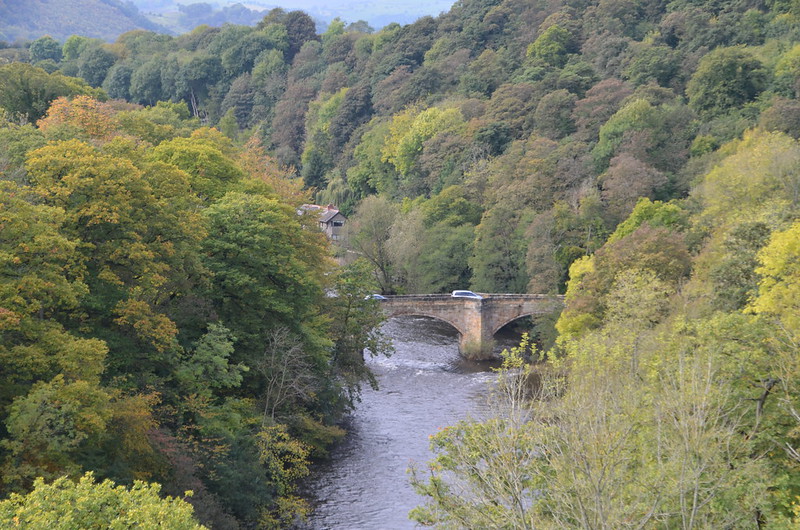
To my right: These trees seem to be right at the beginning of changing their colors. Would love to be there when they're at their fall foliage peak.

To my right: A closeup of the bridge over the River Dee. On Google Maps, I think I've found the correct bridge--it's on the Gate Road. I'm going Google Map walking!
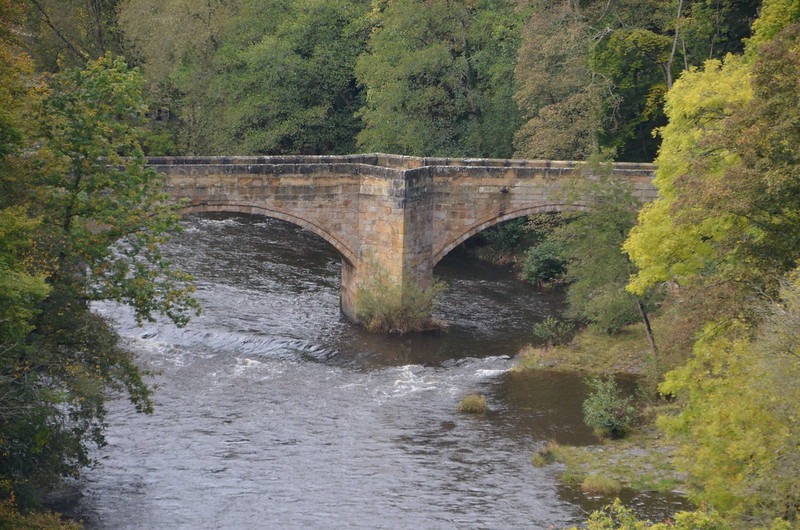
To my right: An even closer look at the bridge. I wonder how old it is? And why do the supports make that diamond-shaped space available? In one of my Google Walk shots, I noticed a pedestrian/walker standing in this very space, looking at the river. Perhaps whenever this bridge was built, the designer wanted to provide a spot for people to stop and take in the beauty of the River Dee and its surroundings. At each end of the bridge there's a round white sign with a red border that reads >6'6"< which I take to mean the width of the bridge. Right below it on the same pole is another sign that says "Except buses and coaches," in English and Welsh. Does that mean no bus, no coach? I'll bet the coach we were on was wider than that!

To my left: With all of those clouds, the random appearance of the sun proved fleeting. The haze impacted the view, too.
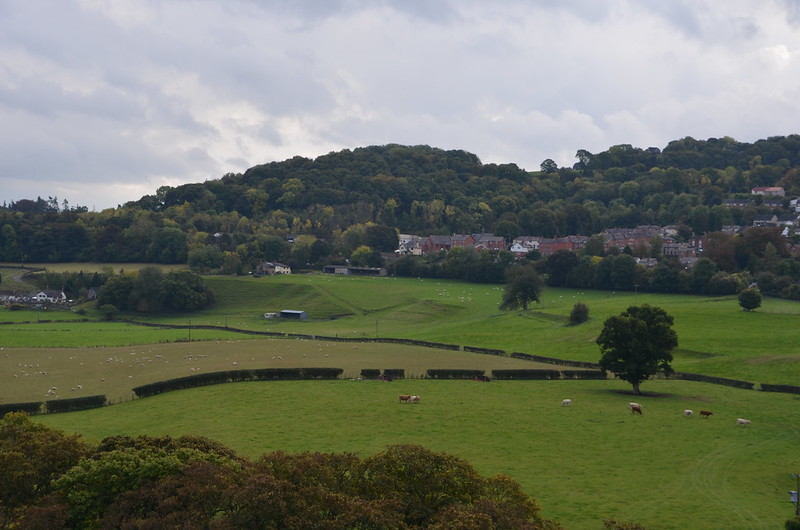
To my left: See what I mean?

To my left: I like this one best--sweet shadow beneath the tree in the corner of that field.
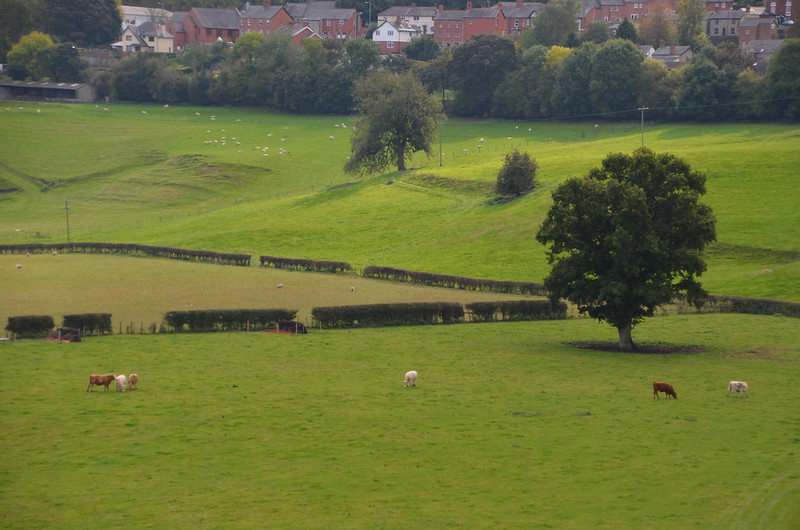
To my left: A close up a few seconds later and you can see how the shadow beneath the tree has already changed.

To my left: Here's the River Dee, and in the distance, the Cefn Mawr Viaduct. To find it, look above the last of the visible water, then above all of those trees. See the row of arches?
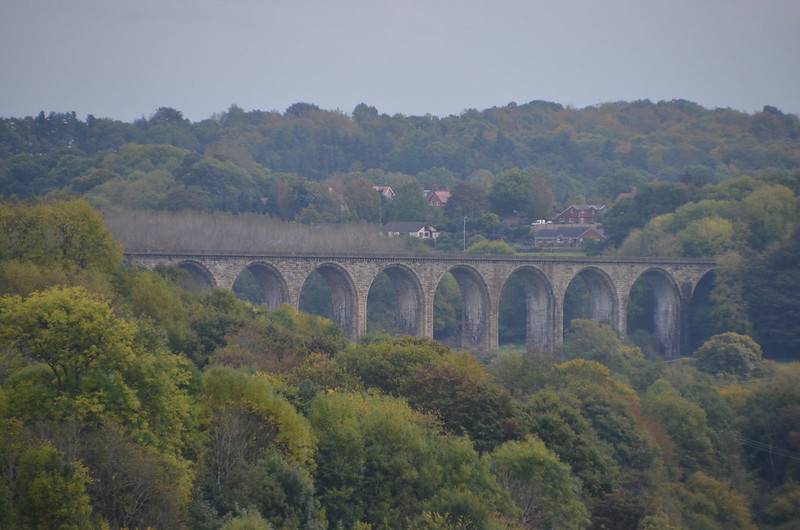
To my left: Here's a close up for you, taken through the haze, shown straight out of the camera. I read this on the Internet: The Cefn Mawr sandstone Viaduct, built by Thomas Brassey, railway contractor, in 1848 to carry the Shrewsbury and Chester railway across the valley of the River Dee.
I also read this on the Internet: The Chester and Shrewsbury railway runs at the eastern end of the Vale of Llangollen, beyond the parish boundary, passing through Cefn Mawr on route from Chester to Shrewsbury. It is carried over the River Dee by a stupendous viaduct, half a mile down stream from the Pontcysyllte Aqueduct. It measures one thousand five hundred and eight feet in length, and stands one hundred and forty-seven feet above the level of the river. The structure is supported by nineteen arches with sixty foot spans. Construction on the viaduct began started in 1846 and was completed in 1848. Civil engineer and railroad pioneer Henry Robertson completed plans for crossing the River Dee at Cefn Mawr.
What was instrumental to the ability to complete the construction of both the Cefn Viaduct and the Chirk Viaduct in only two years was the Shropshire Union Canal or what is now called the Llangollen Canal for the shipment of sandstone form the quarries of Cefn Mawr on the north side of the River Dee valley across the Pontcysyllte Aqueduct to the south side and onwards to the Ceiriog Valley.
So cool! We really touched history on our aqueduct adventure!
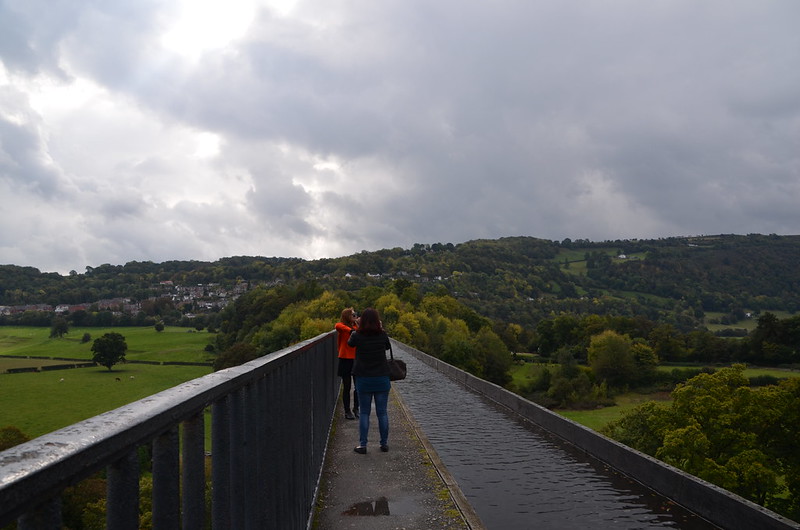
Here's a view of the Poncysyllte Aqueduct that shows you the landscape on both sides at once. The overcast increased, and I soon turned around and started walking back to the coach.
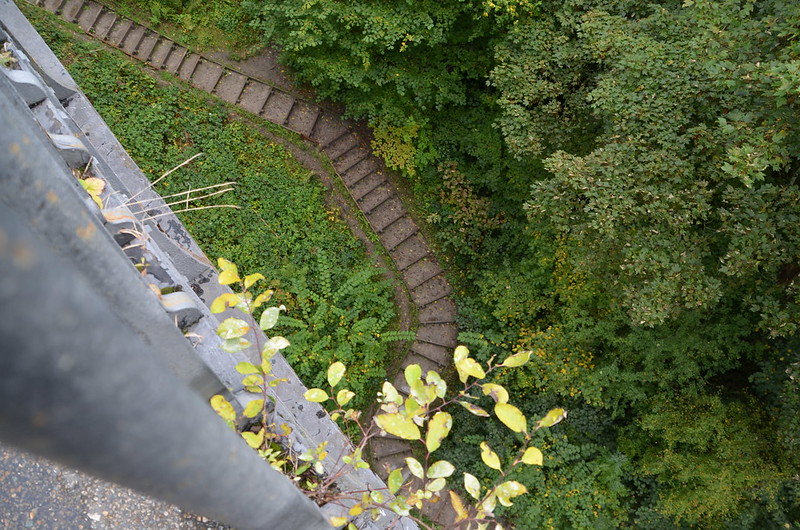
As I neared the entrance to the aqueduct, I stopped for a moment and then looked down. Imagine my surprise when I saw this path made of steps. I like the curves of it in juxtaposition with the rectangles made by the steps.
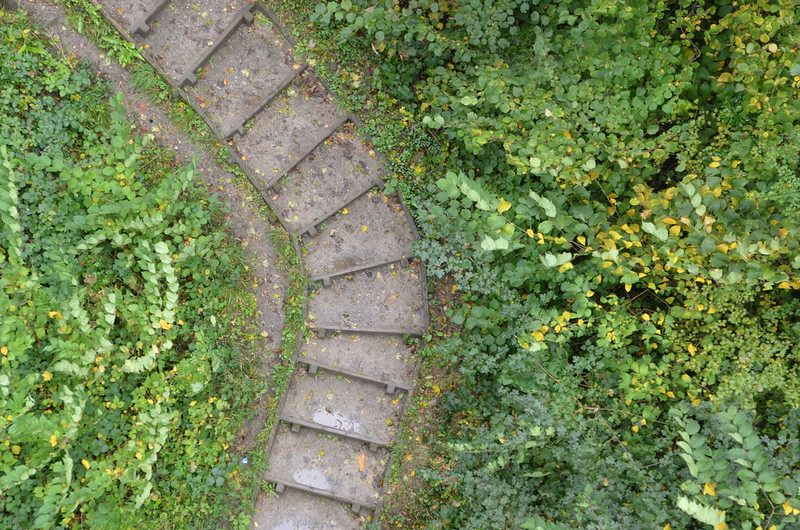
Close up--really cool.
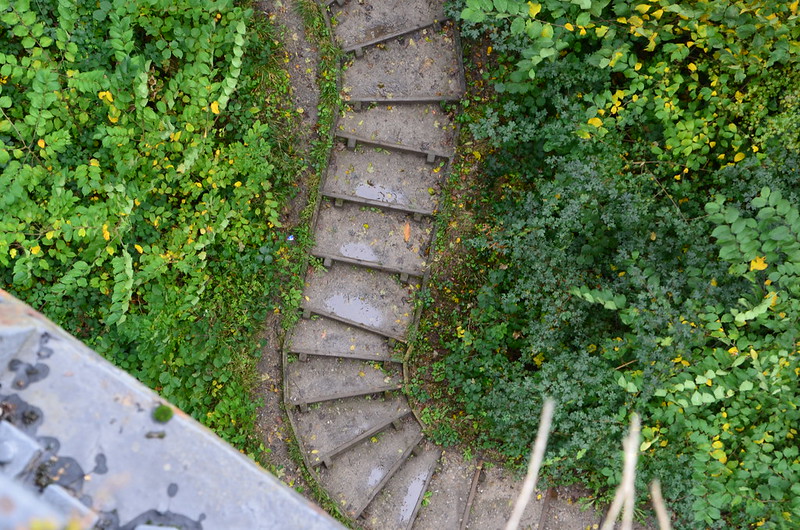
One more close up. I couldn't stop looking, and considering my fear of heights, I feel blessed to have been able to see this path.
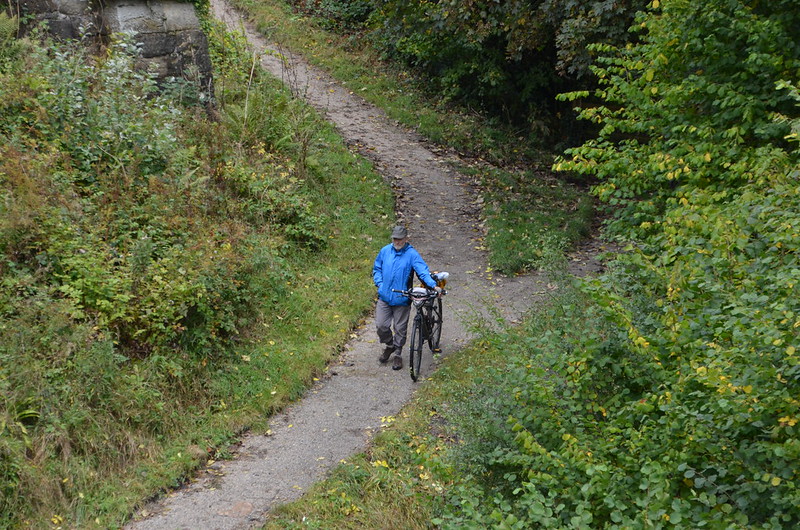
I glanced up the slope and saw this man with his bicycle. So neat!

Pretty roses in bloom in early October.
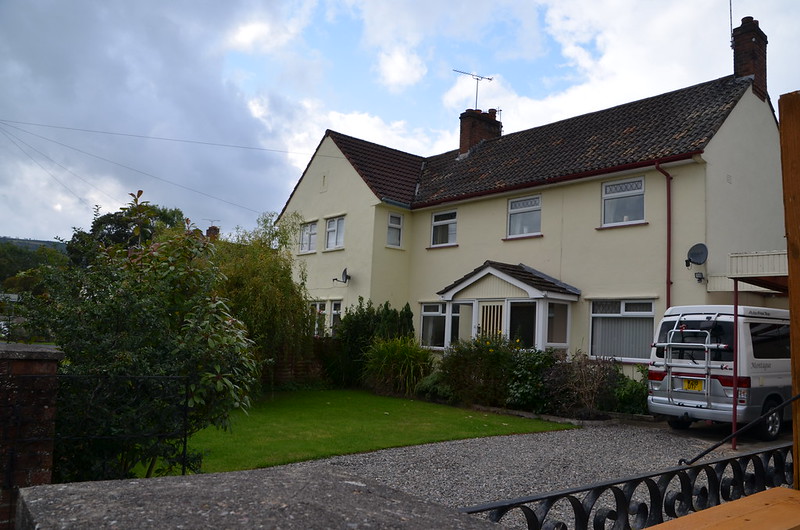
To me, this house looks much larger than others nearby.
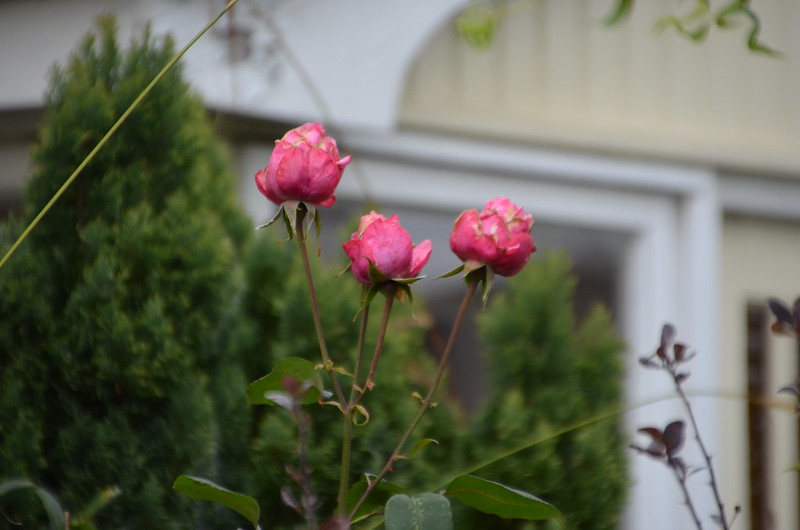
One last look at the autumn roses. Next post--I start my photos of Llangollen!

Such magnificent views, Lynette. You've photographed the area beautifully!
ReplyDeleteDitto William Kendall!
ReplyDeleteWonderful pictures Lynette! I almost feel like I am on the trip with you. I love that path too.
ReplyDeleteWhat a beautiful area.
ReplyDelete